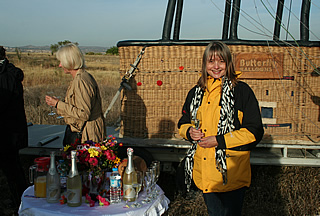

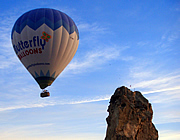
The caravanserais, or hans, atmospherically conjure up an exotic past, the lodgings for countless trans-Asia traders who drove their beasts of burden across the long trade routes.
Ballooning was amazing - the highlight of our trip!
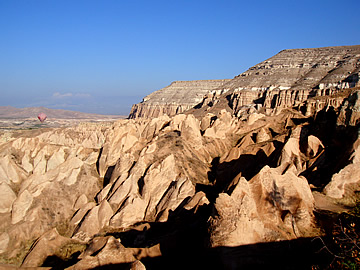
On the way north from Ürgüp to visit the first caravanserai, Sarihan, we stopped at several viewpoints, walking some way into the countryside for fine views. The landscape is stunning, not just fairy chimneys but smooth, bulbous, creamy rock formations, pink "badlands", striated cliffs and, in the valley bottoms, patches of cultivated land.
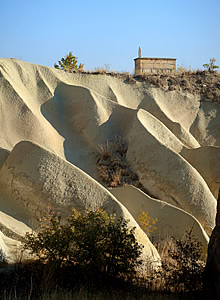
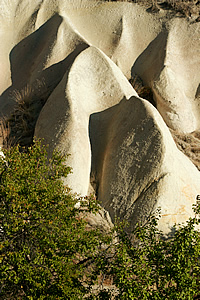
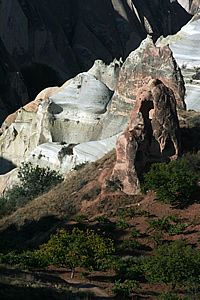

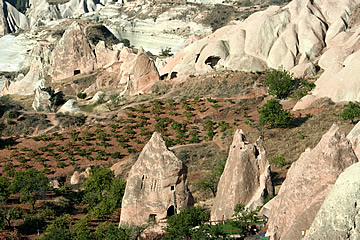
Caravanserais or hans were strung along the ancient trade routes, the most famous of which are the Silk Roads which crossed Asia from far-flung China to the Mediterranean. We had seen city hans in Istanbul and a particularly beautiful fondouk in Fes - all serving exactly the same purpose of lodging for merchants and their animals.
The Anatolian trade routes are not strictly part of the ancient Silk Roads but linked up with them through its Mediterranean ports.1 Trade routes crossed Anatolia in all directions, connecting the inland trade hubs to the Mediterranean, Black Sea, Aegean ports and Constantinople on the Bosphorus, and thence to cities such as Baghdad in Iraq and Aleppo in Syria.1
A huge range of goods was transported: basic foods such as grains and fruits, carpets and leather, metals and minerals, livestock were all exported. On the return journey the traders would bring spices, silks, perfumes, glass, furs. Slaves and thoroughbred horses were traded in both directions.1
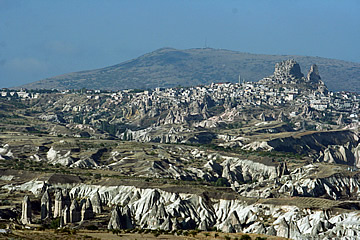
Hans sprang up along the routes at distances which camels could travel in one day. Merchants travelled in groups - caravans - for greater security.
Travellers were allowed three days food and lodging. Facilities included latrines, baths and repair shops and there would have been grooms, vets and smiths on hand to tend to the animals' needs. The buildings may also have had a military function, acting as forts in times of need.
These places would have been noisy, smelly and bright with firelight at night when a simple evening meal was consumed and fellow travellers and merchants exchangednews from across Asia.
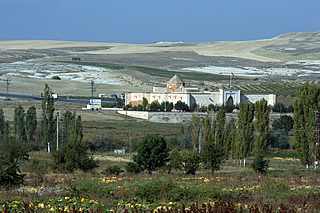
Sarihan, five or six kilometres east of Avanos, is one of the the best-known and most-visited of the caravanserais. It has been very well-restored, in particular the attempt to separate the reconstruction from the original building so that, for instance, where the upper portion of the entrance portal had collapsed, the reconstruction is undecorated. It is thus quite clear that the lower decorated portion is original.
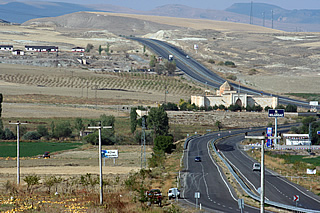
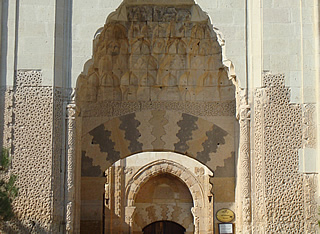
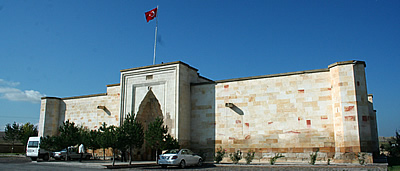
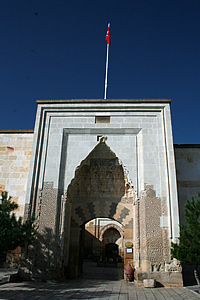
A beautiful portal faces east, the direction from which the traders would come with their goods. The east-west road loops around the building - in the past there would have been a spur road leading directly to the gate.
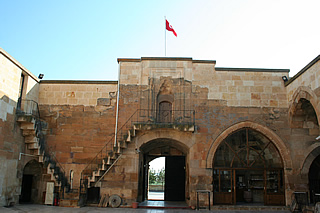
Inside a large courtyard with a fountain is surrounded by arcades and chambers for the merchants and their beasts.
An exterior staircase leads to a small mosque above the entrance. This is unusual, normally the mosque would have been in the courtyard. On the western side a large arched hall is now used for whirling dervish performances.
Dating from Seljuk times of around 800 years ago the architectural elements are Islamic in style with geometric patterns and wonderful interlocking stone arches above the main gate and the inner gate leading to the hall.
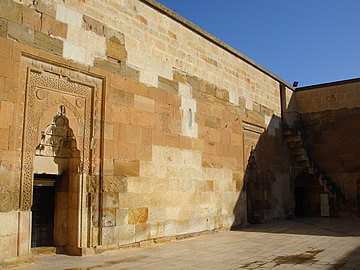
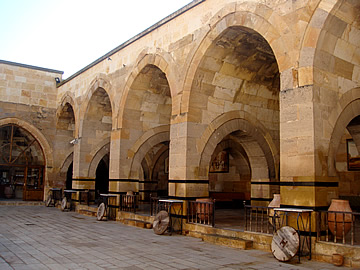
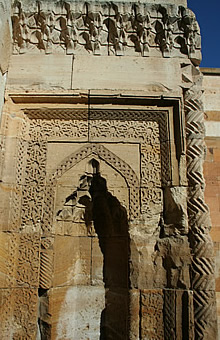
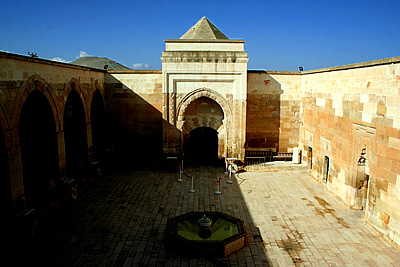
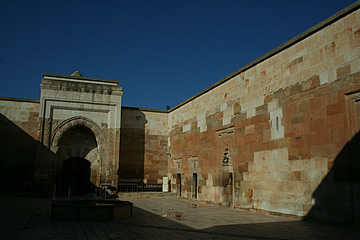
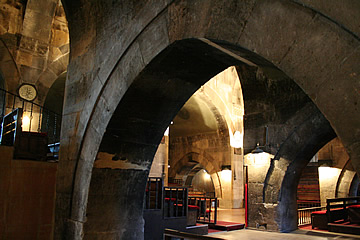
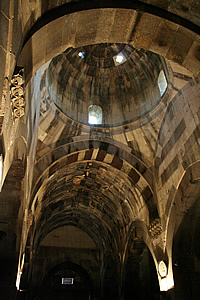
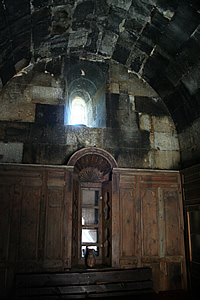
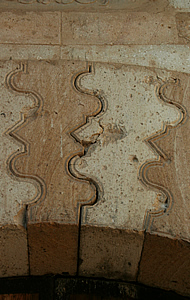
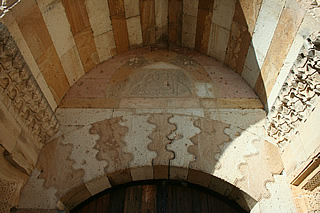
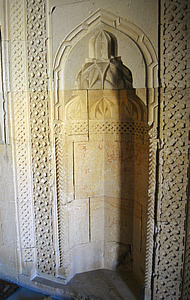
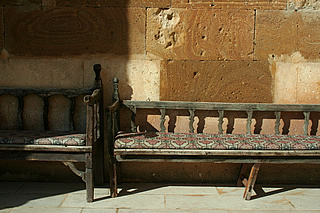
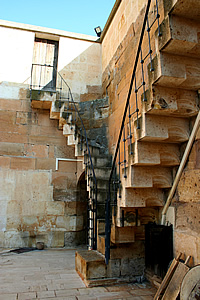
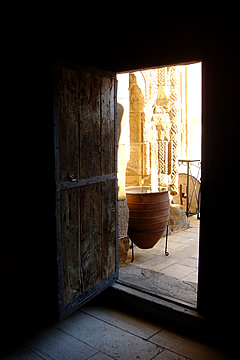
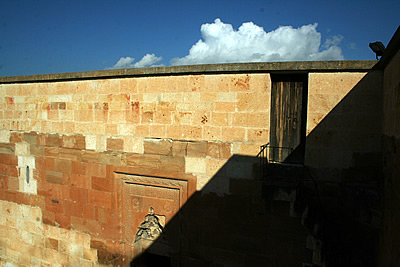

On the way to Agzikarahan on the Aksaray-Nevşehir motorway we passed two or three more caravanserais and stopped where we could.
What remains of Alayhan is a small covered building in front of which are the foundations of ruined buildings.
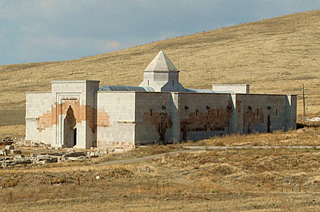
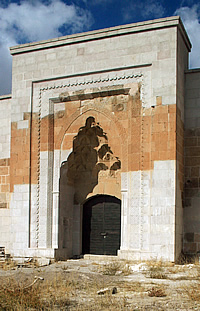
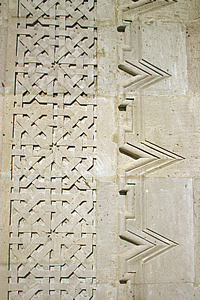
This caravanserai dates from the 12th century, the time of the Seljuk Sultan Kılıçarslan II, and is one of the oldest known.2 The covered section has been completely rebuilt, the red stone being original. Inside it had a central vault with seven vaults running along each of the long sides. The ruins in front of it are all that remains of an open courtyard.
Alayhan is in the process of renovation and locked when we visited so it was not possible to enter.
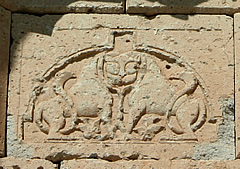
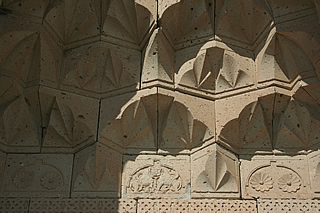
It has some beautiful carving around the entrance. This includes a very mysterious lion-type figure which has two bodies but only one head. It is directly above the gate in the centre so was obviously of some significance.
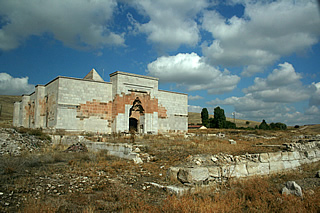
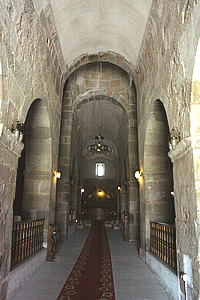
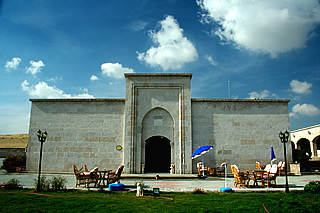
Further along the Aksaray-Nevşehir motorway is this rebuilt han, originally dating from the thirteenth century. Work on renovating this han is now complete and the building is used as a café and retail space, principally for tourists.
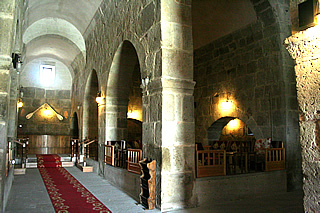
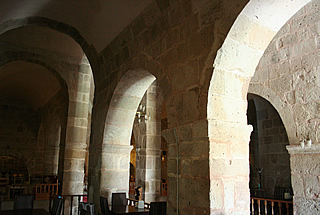
The interior is composed of five barrel-vaulted spaces running the length of the building from front entrance to the back wall, split by a transverse vault across the centre.
Apart from ridged stonework, none of the original decoration around the portal seems to have survived.
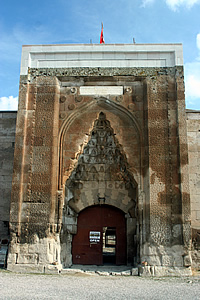
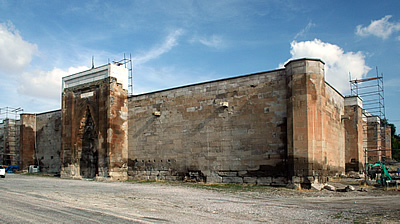
Finally we came to the magnificent Agzikarahan, one of the most impressive hans remaining. It has both a covered section and a large courtyard in the middle of which is a kiosk mosque, a classic Seljuk layout.
A merchant Hoca Mesud bin Abdullah financed the building of the han which was begun in 1231 during the rein of Seljuk Sultan Alaeddin Keykubad I and the courtyard completed by his son Gıyaseddin Keyhusrev II.1
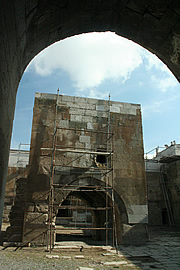
The han is undergoing renovation, again it is quite clear which parts are new from the colour of the materials used.

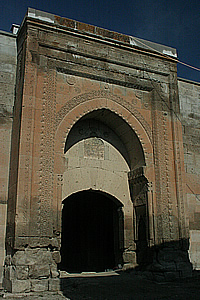
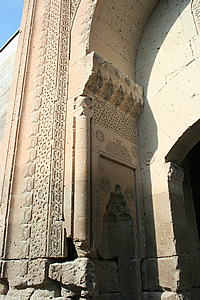
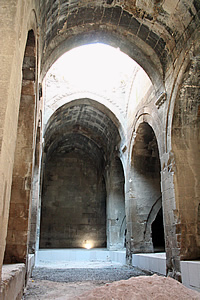
The main portal of the han faces west. It is deep and dark and leads into the open courtyard with the free-stending kiosk mosque at its centre. Unusually the entrance to the covered section of the han from the courtyard is not opposite the great portal but to the left, facing south.
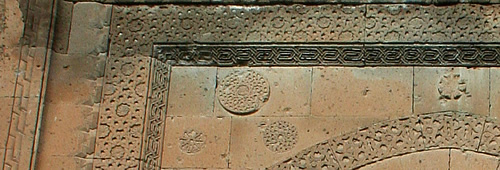
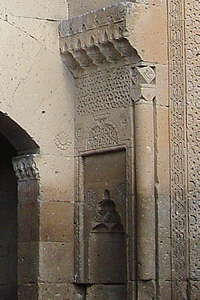
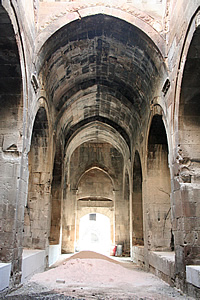
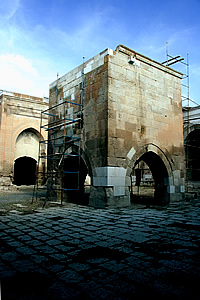
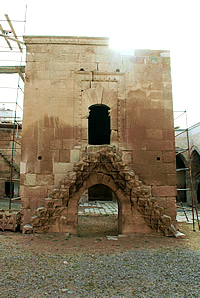
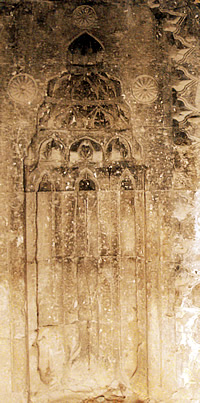
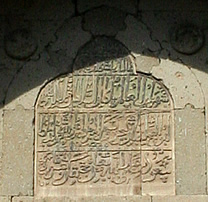
The entrance to the covered area is as richly decorated as the main portal.
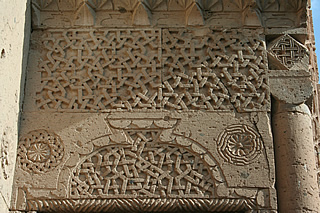
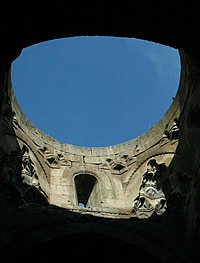
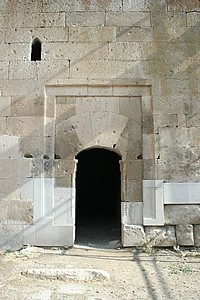
The covered section is a high arcaded hall - a dome has collapsed. Between the arches are platformed spaces.
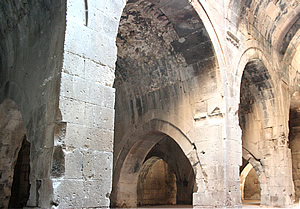
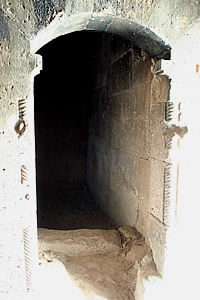
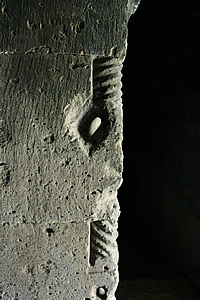
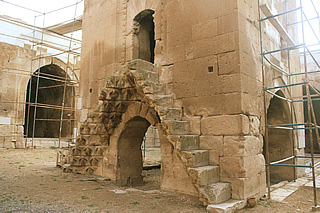
The mosque is approached by two staircases on the north side which are carved in typical decoration on the underside.
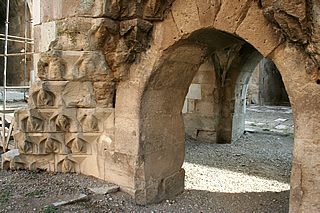
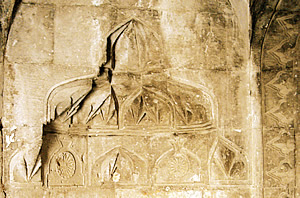
Inside the mosque it is very dark but decorated niches can still be seen.
The sides of the courtyard are limed with open arcaded spaces and rooms where animals were stabled and merchants housed.
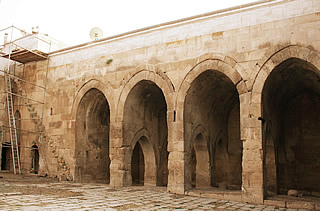
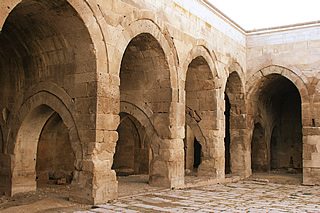
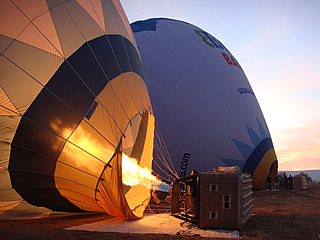
We spent a good deal of time researching the many companies which offer balloon trips and decided to go with Butterfly Balloons.
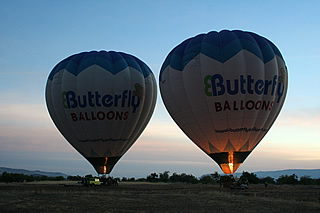
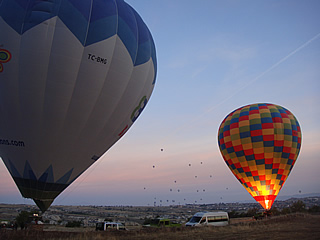
We had an absolutely fantastic time and it was the highlight of our holiday. Butterfly pride themselves on not using the same take-off point every day but looking for the most suitable location to give their passengers the best possible experience, taking into account principally the wind direction so that they can cover as many of the valleys as possible.
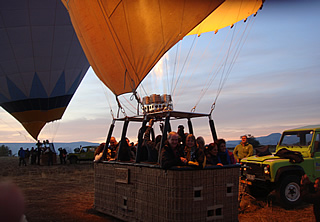
We were collected from our hotel at 5:45 am on a clear morning, the sky still dark with stars and a new moon. First we were taken to the Butterfly offices to register, pay and have a light breakfast of juices, fruit, breads. etc. Then off with our pilot Mustafa by mini-bus driving past most of the other companies' balloons inflating near the Goreme Open Air Museum - quite a sight!
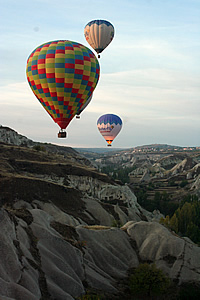
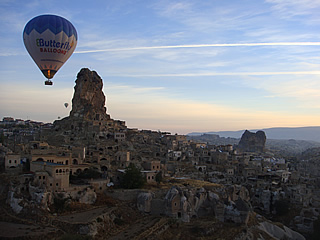
We arrived at our take-off point near Ortahisar where the Butterfly balloons were already inflating.
We scrambled into the basket of our balloon and, after a short safety instruction, the gentlest of take-offs, gradually rising high into the air - a magical feeling.
As the sun rose we drifted over the towns and villages and out over the wonderful landscape.
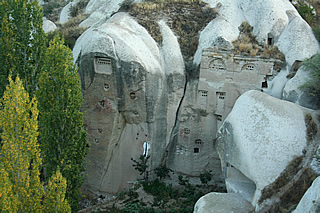
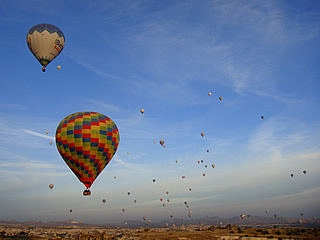
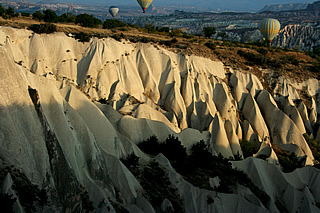
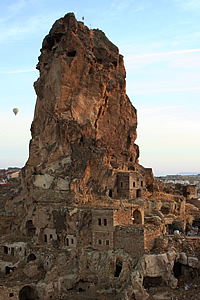
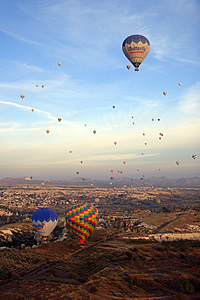
Mustafa was great, pointing out landscape features and making jokes which he must have made a million times before but he made it all sound fresh. There was plenty of banter, too, between Mustafa and Mike, one of Butterfly's English pilots in another balloon.
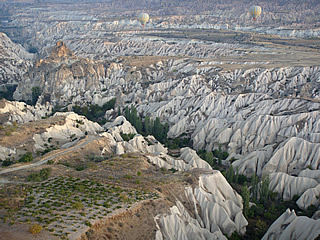
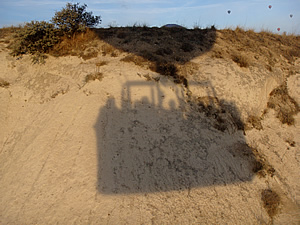
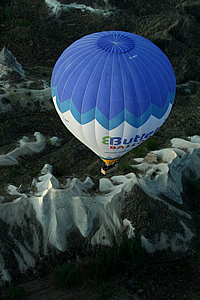
We flew over Rose Valley, Pigeon Valley, Love Valley, Pasabag and much more, skimming cliff faces, rising to as high as 1000m and so low that we almost brushed the tree tops - fantastic!
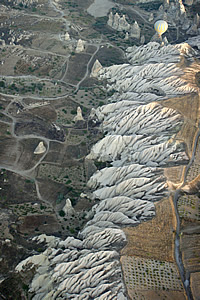
It is only possible to go so high in cool, calm conditions.
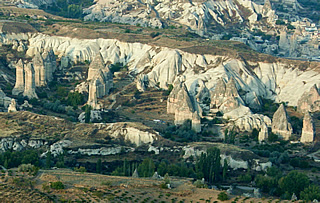
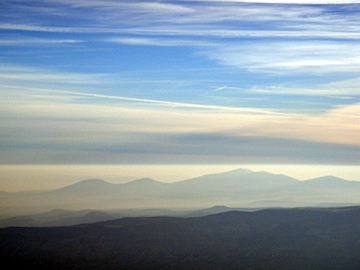
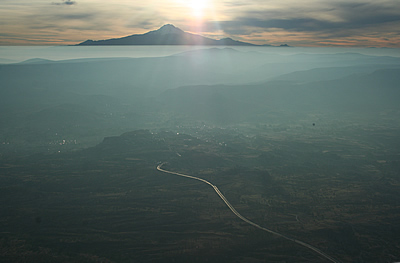
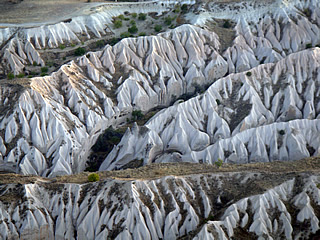
Although we hadn't noticed it there was a thin haze in the air for, suddenly, we were above it. The view was stunning.
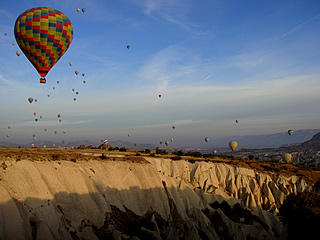
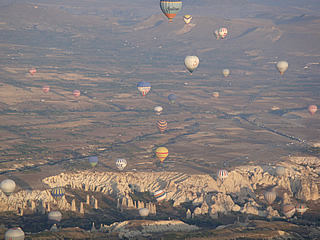
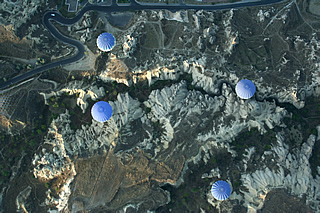
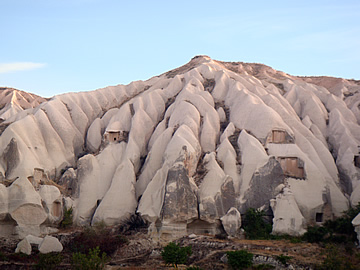
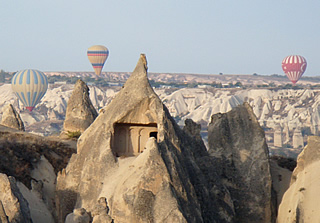
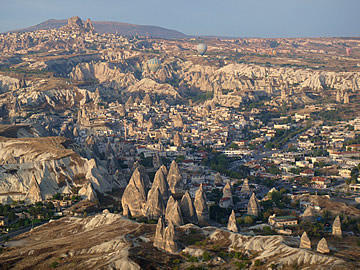
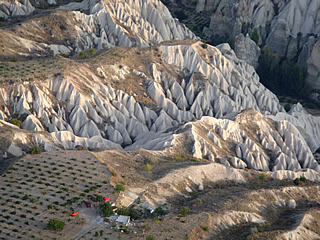
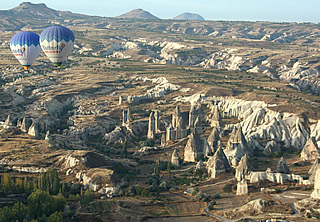
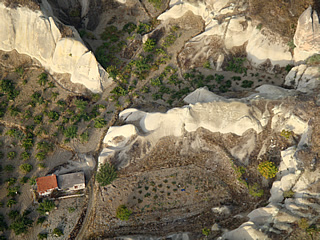
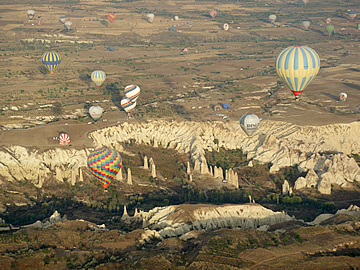
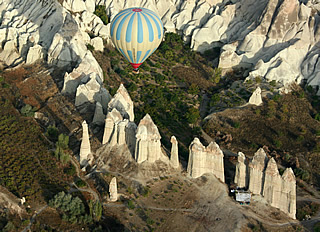
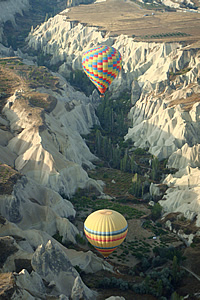
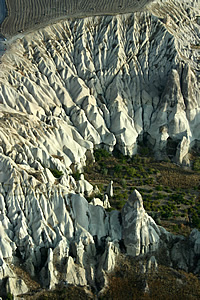
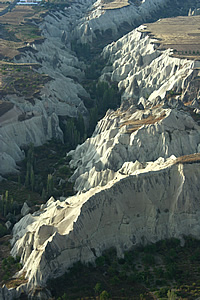
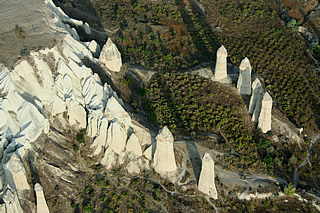
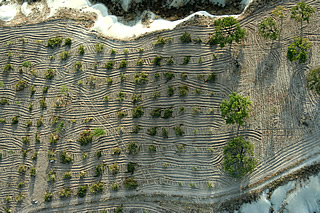
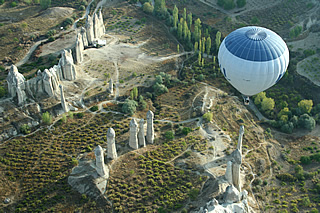
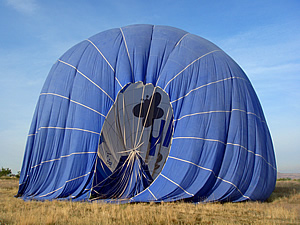
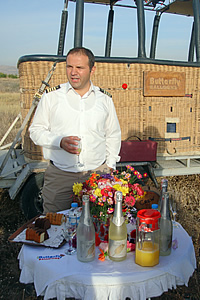
After well over an hour in the air the Butterfly team very skillfuly landed the balloon on its trailer. We had a rather good Inci Damlasi "champagne" and excellent chocolate and orange cakes before being taken back to Serinn House.
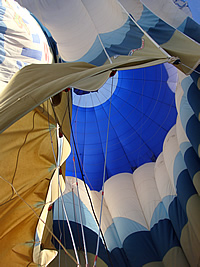
Highly recommended, an incredible experience and one we'd do again at the drop of a hat!
